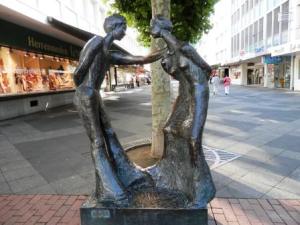Welcome to Bad Godesberg
‘Encounter‘ by Eva de Maizière
This post has nothing to do with history but concerns an artwork which speaks to me. I would like to introduce you to a sculpture in Bad Godesberg, a southern suburb of Bonn. Often remembered for its abundance of embassies during the time when Bonn was the capital of West Germany. The “Bad” (spa) refers to its older history as a place with a spring with health benefits. Continue reading






